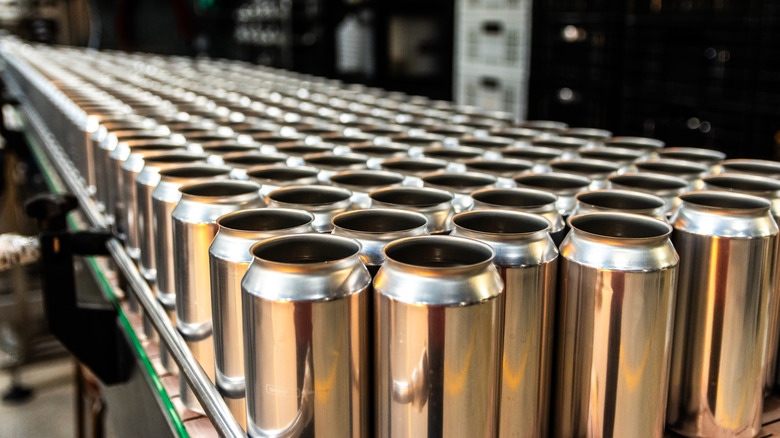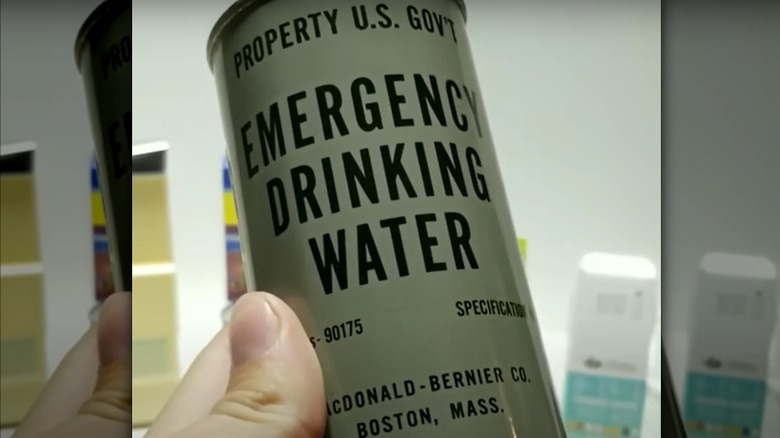How The Popularity Of Canned Fallout Shelter Water Erupted In The 1960s
Americans have been buying canned water long before Liquid Death dominated the zero-proof RTD market. But in the 1960s, it wasn't just a playful food trend – it was borne out of necessity (or, perhaps more accurately, perceived necessity). When the 1950s rolled around, folks were still recovering from the aftermath of World War II. As the Cold War began to take shape, the threat of global nuclear fallout was officially on the table and very much on the minds of the American people.
Households nationwide began constructing elaborate fallout shelters and stocking them with 14 days' worth of food and water rations, as encouraged by the Eisenhower Administration in 1955. This meant gathering canned vegetables, many different types of canned meat (what's up SPAM fans?), and (you guessed it) government-issued canned water. These bad boys were exactly what "canned water" sounds like: commercially-sealed metal food cans filled with plain water. Nowadays, the only way to get your hands on the cans is to find 'em on eBay, being sold by vintage resellers, or from other unlikely sources.
Luckily, a few foodies with a penchant for history have opened these cans and posted videos online so fellow nostalgics can see what's up. TikTok account @mrs.fallout shared a video opening a sealed can of government-issued drinking water from the 1960s, with a drab label reading "Property U.S. Govt Canned Drinking Water" made by MacDonald-Bernier Co. in Boston, Massachusetts. Right away, it bore traces of green algae-looking growth around the inside rim. (Can you dig it?)
You shouldn't drink Cold War-era canned water
Other testers took the drinkability tests even further. New England Wildlife and More tested a can of government-issued drinking water packed on September 11, 1953. The old cans were sealed with soldered seams down the side, and according to the poster, these canned food soldered seams from the 1960s were known to contain lead. This toxic metal can leach into the water, which is why you always want to ensure that you're choosing a water bottle that does not have lead components. Upon opening the can, the water was ultra-cloudy and instantly emitted a rancid chemical smell.
The presence of ammonia in water indicates biological waste, and the test found an ammonia content of 1.0, meaning the water was heavily polluted. Zero levels of nitrate, nitrite, and a 7.4 to 7.8 pH were all in line for safe drinkable water. But the most harmful contaminants found in the water were unsafe levels of copper (7 parts per million), iron (5 parts per million), and lead (20 parts per million). For reference, the EPA's maximum contaminant level for lead in drinking water is 0.015 milligrams per liter, which is the same as parts per million. (Yikes.)
"You would be crazy to drink this," commented the poster. "This would definitely screw you up." A similar-looking can of water to the one tested in the video is currently available for purchase on eBay for $13.95 before shipping. According to the packaging, this version was issued to the U.S. Coast Guard, contains 10 ⅔ ounces of water, and was packed by H&M Packing Corp. in Glendale, California.

